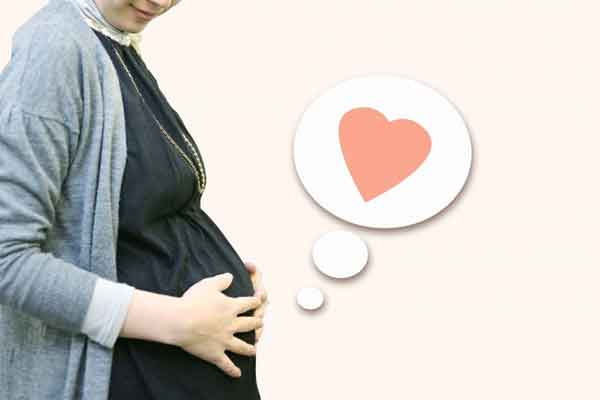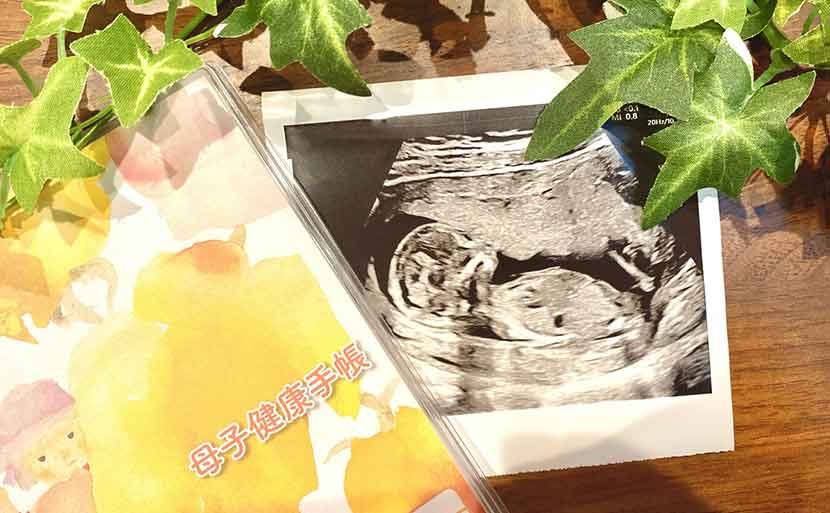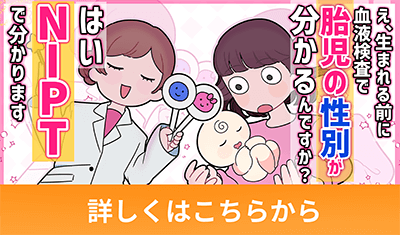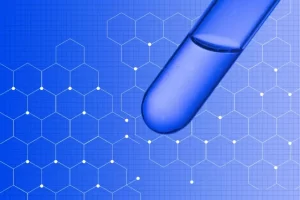Summary of article
The mother and child handbook is usually received around the fifth to sixth week of pregnancy, when the baby’s heartbeat can be confirmed by ultrasound examination. The Maternal and Child Health Handbook also requires. These are a medical certificate from the hospital where the pregnancy was diagnosed, a certificate of residence with your Mai Number card or personal number on it, and identification documents with a photograph. There is no rule as to when you have to receive your MCH handbook, but you should aim to receive it by the 11th week of pregnancy.
- What is in the Maternal and Child Health Handbook?
- Maternal and Child Health Handbook is “Made in Japan”
- When can I get my handbook?
- Where can I get a handbook?
- How to get a handbook?
- What is pregnancy notification form?
- When do I get my handbook?
- Public services are available
- What if I can’t pick up my handbook?
- Undergo NIPT when you receive your handbook
- Undergo NIPT before risky prenatal diagnosis
- Highly safe NIPT at Hiro Clinic NIPT
- Undergo Hiro Clinic NIPT when you receive your Maternal and Child Health Handbook
What is in the Maternal and Child Health Handbook?
‘What does the Handbook mean?’How long do I have to use it? How old is the MCH handbook? The Maternal and Child Health Handbook (MCH Handbook) is officially called the Maternal and Child Health Handbook and is issued by each municipality.
The Maternal and Child Health Handbook is officially called the Maternal and Child Health Handbook and is issued by each municipality. Its role is to support the health of mothers and children during pregnancy, childbirth, newborns, infants and children aged 0 to 6 years.
The Maternal and Child Health Handbook contains information on the progress of pregnancy and childbirth, health conditions up to the age of primary school entry, and vaccination records, and manages all these records together.
Maternal and Child Health Handbook is “Made in Japan”
It was in our own country, Japan, that the idea of the Maternal and Child Health Handbook was born. It has a long history and came into force in 1948. At the height of the post-war period, children suffered from malnutrition and infectious diseases.
The maternal and child health handbook was devised in response. Today it is called the Maternal and Child Health Handbook (Maternal and Child Health Handbook). At that time, if a mother had this handbook, she was given priority in receiving milk and food. The idea that the health of the mother and child is of paramount importance has been carried on to the present day.
The convenience of the MCH handbook has now spread from Japan to the rest of the world and is used in more than 30 countries and regions.
National projects for the dissemination of the MCH handbook have been carried out in Japan, South Korea, Thailand, Indonesia, Bhutan, East Timor, the Netherlands, France, the USA, Niger, Tunisia, Cote d’Ivoire, Senegal, Burkina Faso, Benin, Kenya, the Dominican Republic and many more countries in the future. It is believed to be spreading to more countries in the future.

When can I get my handbook?
When exactly can a mother and child start receiving the Maternal and Child Health Handbook for the purpose of health care?
In fact, there are no clear rules.
However, it is said that the baby’s heartbeat can be confirmed by ultrasound examination in the fifth or sixth week of pregnancy, which is the approximate time when the mother and child handbook can be received.Your doctor will often urge you to get your MCH handbook around six weeks into your pregnancy. Of course, if you are not pregnant, you will not receive a MCH handbook.
Where can I get a handbook?
Where can the MCH handbook be obtained?
After the pregnancy is confirmed at the hospital, the MCH handbook is issued at the municipal office or health centre of the city, ward, town or village where the woman is registered, and can be obtained by submitting a ‘pregnancy notification’ form.
Note that the MCH handbook is not issued at hospitals. The MCH handbook is issued at the municipal office or health centre of the city, ward, town or village where you live.When you have confirmed your pregnancy, check the website of the municipal office.
How to get a handbook?
Once the pregnancy is confirmed, it is time to go and collect the MCH handbook, but there are certain things that are required to receive it. However, there are certain things that are required in order to receive a MCH handbook, such as the documents required at the time of notification.
The three are as follows
- ‘Medical ticket’ of the hospital where the pregnancy was diagnosed
- Something that confirms the ‘personal number’
- ‘Identity documents’ with photograph
① is literally a medical certificate from the hospital where the diagnosis was made.
➁ is a residence card with my number card/personal number on it, etc.
③ is a driver’s licence, passport or personal number card.
A convenient option is a personal number card. It is advisable to obtain one in advance, as it allows you to have your personal number and identity verified in one go.
The reason why these documents are required is that the pregnancy notification will include the personal number, the number of weeks of pregnancy and the name of the medical institution where the pregnancy was diagnosed.
In some municipalities, a ‘pregnancy certificate’ issued by the hospital is also required.
Check the website once before visiting a government office.
What is pregnancy notification form?
What kind of document is the pregnancy notification form, which is required to receive the Maternal and Child Health Handbook?
According to the regulations of the Maternal and Child Health Act, the entries on the pregnancy notification form must include the name, date of birth, number of months of pregnancy and the medical institution where the baby was diagnosed.
However, this form of entry differs from municipality to municipality, and some municipalities include a section asking about painful experiences such as ‘abortion’.
If you are concerned about the form of entry, you should inquire at the municipal office before going to the counter.
When do I get my handbook?
When do I have to receive my handbook? Is there a set deadline or number of weeks of pregnancy?
Actually, there is no fixed date by which you have to receive your MCH handbook.
Unless something really bad happens, it is unlikely that you will not receive your MCH handbook. However, it is important to receive your MCH handbook as soon as possible, as it provides a record of you as an expectant mother and guardian, a record of your baby’s growth, and access to public services for expectant mothers and babies.
The MCH handbook does not have a fixed expiry date, but if you are wondering, “By how many weeks do I have to get it?” If you are not sure, you should go and receive it by ‘up to 11 weeks’ of pregnancy’.
Public services are available
Once you have received your handbook, you can take advantage of public services for pregnant women.
The details of these services vary from municipality to municipality, but the three main ones are as follows
①You can get a subsidy ticket
A supplementary ticket called a Pregnancy Health Check-up Slip is issued.
These are like discount coupons that can be used for antenatal check-ups and are given together with the Maternity Handbook when the mother and child are issued. This can help to reduce medical costs related to pregnancy and childbirth, which are all paid for out-of-pocket.
➁Maternal and child health services are available
Advice is available through parents’ and mothers’ classes.
Parents’ classes are classes where practical training and advice are provided to help make the pregnancy comfortable and facilitate childbirth and childcare.
There are also home visits by public health nurses and midwives, who can give advice on the baby’s development and childcare.
In addition, various consultation services are available, including infant health check-ups, baby health consultations, individual psychological consultations, childcare classes, infant and pregnant women’s dental consultations and dental check-ups, making them a reassuring ally in a pregnancy where there is a lot of anxiety.
③Childcare support services
The Cabinet Office’s Childcare Support Passport Programme provides access to services to support child rearing.
The card is called differently by each municipality, such as ‘child-rearing privilege card’, ‘child-rearing benefit card’ or ‘child-rearing support passport’, but simply presenting the card entitles you to services and privileges offered by the company.
For example, discounts on food and beverages, discounts on products, points awarded, etc. These are only modest services, but they are all great for pregnant women. You should definitely make use of them to make your pregnancy more comfortable.
So when on earth can you start using these aid vouchers?
It can be received together with the Maternal and Child Health Handbook after the pregnancy is confirmed and the pregnancy notification is submitted at the municipal office. Of course, you can use it immediately.

What if I can’t pick up my handbook?
Some pregnant women may have morning sickness or other health problems that make it difficult to go to the town hall.
If you want to receive your MCH handbook as soon as possible, you can also receive it by proxy.
If a proxy is to receive the MCH handbook, the following documents are required to confirm the authority of representation, the identity of the proxy and the number of the pregnant woman.
- Power of attorney, family register, health insurance card, etc. of the pregnant woman herself
- Personal number card, driving licence, passport, etc.
- Copy of certificate of residence with personal number, etc.
However, as these required documents differ from municipality to municipality, it is advisable to check the website before visiting the municipal office.
Undergo NIPT when you receive your handbook
Pregnancy check-up after receiving the handbook
Generally, after the pregnancy is confirmed and the mother and child handbook has been received, the process is the antenatal check-up. The antenatal check-up is a very important examination by the medical institution in charge to ascertain the health of the mother and baby.
The main tests performed during the antenatal check-up are blood tests, cervical cancer screening, genital chlamydia test, blood pressure measurement, urine test, weight measurement, abdominal circumference and uterine fundus measurement, ultrasound examination and medical examination. These are different tests, each of which is necessary according to the number of weeks of pregnancy.
Although many tests may seem necessary, babies often have 21 trisomy (Down syndrome) or congenital diseases that are difficult to detect in general antenatal check-ups.
What is prenatal diagnosis for a more in-depth look at the baby’s health?
Prenatal diagnosis refers to tests to examine the health of the baby in the mother’s womb. The main prenatal diagnostic tests performed are the ‘amniotic fluid test’ and the ‘chorionic villus test’, in which cells in the amniotic fluid and chorionic villi are collected from outside the mother’s body to check for chromosomal abnormalities in the baby.
What is amniotic fluid test?
Previous prenatal diagnosis has involved amniotic fluid and chorionic villus tests. Amniotic fluid testing is a procedure in which a needle is inserted into the mother’s abdomen and the amniotic fluid collected is examined. The amniotic fluid contains foetal cells, from which chromosomal abnormalities in the baby can be detected. However, the amniotic fluid test cannot be performed in early pregnancy, when the volume of amniotic fluid is low, but only after 15-16 weeks of pregnancy. A needle is inserted below the mother’s navel to puncture the amniotic membrane, which is said to carry a risk of premature birth or miscarriage, but it is a definitive diagnosis that can detect chromosomal abnormalities and genetic disorders in the baby directly from the amniotic fluid.
What is chorionic villus test?
The trophoblast is an organ in the placenta that allows the baby to take in nutrients from the mother’s blood and to pass on waste products. There are two types of trophoblast examination: transabdominal, in which trophoblast cells are extracted from the mother’s abdomen using a needle, and transvaginal, in which a special medical device called a trophoblast biopsy forceps is inserted into the vagina to extract the trophoblast cells. Trophoblast screening can be performed at 10-13 weeks’ gestation. It is considered a definitive diagnosis, where the collected trophoblast cells can be used to check for chromosomal abnormalities and genetic disorders in the baby. As with amniotic fluid testing, trophoblastic trophoblastic testing also carries risks, such as miscarriage, and should be considered carefully in consultation with your doctor.
Undergo NIPT before risky prenatal diagnosis
Both amniocentesis and trophoblastic testing are risky but highly accurate definitive diagnostics. However, many people are uncomfortable with injections and may be hesitant to undergo such a risky test, even if it is rare, during the delicate period of pregnancy.
In order to reduce the risks and burden on mothers and babies, Hiro Clinic NIPT offers NIPT, a chromosome test that only requires a blood sample.
What is NIPT?
NIPT stands for Non-Invasive Prenatal genetic Testing and refers to a new type of prenatal diagnosis. Also called non-invasive prenatal testing, it is said to be a testing method that is less burdensome for mother and foetus, as the test is carried out using only blood sampling.
What NIPT can reveal about the baby’s illness
NIPT is a test that can detect chromosomal and genetic abnormalities such as 21 trisomy (Down syndrome), 18 trisomy (Edwards syndrome) and 13 trisomy (Patau syndrome) in the foetus by taking blood samples from the mother.
While the amniotic fluid test is performed at 15-16 weeks’ gestation, the NIPT test at Hiro Clinic can be performed from 6 weeks’ gestation. Furthermore, the accuracy of the NIPT for 21 trisomy (Down syndrome) is 96.5% sensitivity and 99.99% specificity.
What is the relationship between NIPT and gestational age?
In Japan, the first pregnancy and delivery at the age of 35 or over is called ‘older pregnancy and delivery’. The modern medical system has made it possible for older women to have safe deliveries. However, even with a well-developed medical system and a young, healthy mother, the number of eggs in a woman decreases with age.
Pregnancy and the period leading up to childbirth are extremely delicate. No matter how careful you are about your health and lifestyle, whether young or old, not all of this will be reflected in your baby’s chromosomes. For these reasons, why not find out about your baby’s health and future risks as early as possible with NIPT at Hiro Clinic NIPT?
〈Female ovum reduction numbers〉
・18-34 years old Approx. 300,000-500,000 (reproductive age).
・35-37 years old Approx. 20 000
・51-53 years old Approx. 1000 (at menopause)
After the age of 35, the implantation rate declines as the number of ovum declines. On the other hand, the rate of chromosomal abnormalities rises, which can affect the health of the baby, such as 21 trisomy (Down syndrome). Of course, these are not only problems of the mother, but also have a lot to do with the father’s age and the decline in testicular function.
Highly safe NIPT at Hiro Clinic NIPT
Hiro Clinic NIPT offers a rapid, highly accurate test using NIPT for the health of mother and baby and for a better birth experience. The plan is tailored to the mother’s age and budget. If you have been refused NIPT by other hospitals because you are having twins, please contact Hiro Clinic NIPT for a consultation.
Hiro Clinic NIPT’s choice of NIPT plans
Hiro Clinic NIPT has performed many NIPTs. We have listened carefully to the concerns and requests of mothers and have prepared a variety of NIPT plans based on the vast amount of test data we have received in the process.
Hiro Clinic NIPT also offers options for efficient NIPT.
Positive scores possible because of Hiro Clinic NIPT
Hiro Clinic NIPT has launched the positive score report, which is analysed based on data from over 64,000 tests performed on pregnant women in Japan. The positive score report is one of the criteria for deciding whether or not to perform an amniotic fluid test, which calculates the likelihood of a positive result if the baby’s health is found to be abnormal (positive) during NIPT.
Undergo Hiro Clinic NIPT when you receive your Maternal and Child Health Handbook
From the time the pregnancy is confirmed and the mother receives the handbook until the time of delivery, mothers may have to carry out many tests and worry about the health of themselves and their baby. Many mothers, especially those who are pregnant for the first time or who give birth at an older age, gather information from the internet and the media due to a lot of anxiety. However, not all of this information is correct, and in some cases, unqualified medical professionals can unnecessarily inflame fears.
Hiro Clinic NIPT has many doctors, including obstetricians and gynaecologists, who are experienced in NIPT and will provide you with information on NIPT as well as difficult medical terms and correct medical information in a way that anyone can understand.
【References】
- Pathological diagnostic educational support – Uterine contents and placenta
- MSD Manual – Chromosomal aberration
Article Editorial Supervisor

岡 博史先生
【役職】
【資格】
【略歴】
【所属】
【SNS】
 中文
中文












